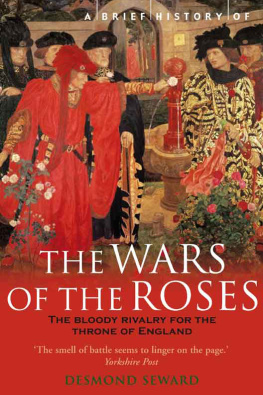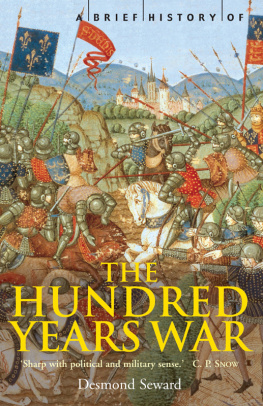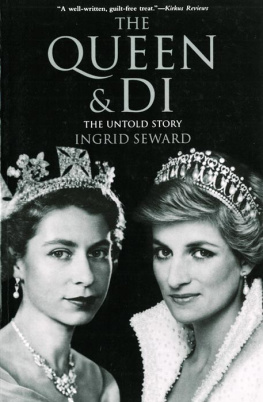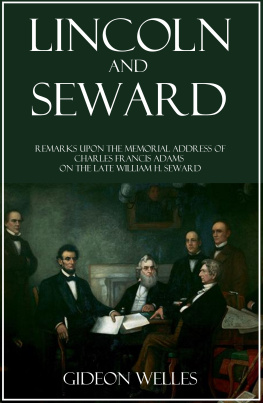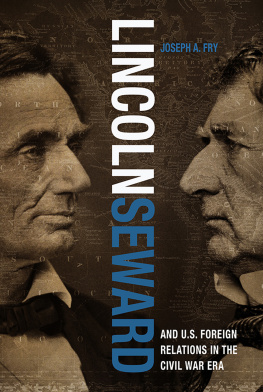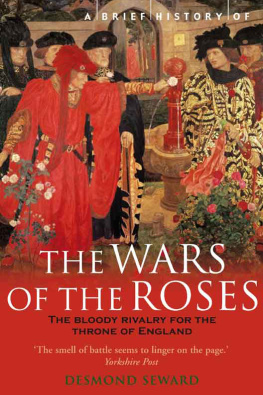Seward - The Monks of War
Here you can read online Seward - The Monks of War full text of the book (entire story) in english for free. Download pdf and epub, get meaning, cover and reviews about this ebook. year: 2014, publisher: Thistle Publishing, genre: Art. Description of the work, (preface) as well as reviews are available. Best literature library LitArk.com created for fans of good reading and offers a wide selection of genres:
Romance novel
Science fiction
Adventure
Detective
Science
History
Home and family
Prose
Art
Politics
Computer
Non-fiction
Religion
Business
Children
Humor
Choose a favorite category and find really read worthwhile books. Enjoy immersion in the world of imagination, feel the emotions of the characters or learn something new for yourself, make an fascinating discovery.

The Monks of War: summary, description and annotation
We offer to read an annotation, description, summary or preface (depends on what the author of the book "The Monks of War" wrote himself). If you haven't found the necessary information about the book — write in the comments, we will try to find it.
Seward: author's other books
Who wrote The Monks of War? Find out the surname, the name of the author of the book and a list of all author's works by series.
The Monks of War — read online for free the complete book (whole text) full work
Below is the text of the book, divided by pages. System saving the place of the last page read, allows you to conveniently read the book "The Monks of War" online for free, without having to search again every time where you left off. Put a bookmark, and you can go to the page where you finished reading at any time.
Font size:
Interval:
Bookmark:
The Monks of
War
The Military Religious
Orders
Desmond Seward
All Rights Reserved
Copyright Desmond Seward 1972
First published 1972 by Penguin
This edition published in 2014 by:
Thistle Publishing
36 Great Smith Street
London
SW1P 3BU
www.thistlepublishing.co.uk
For Peter Drummond-Murray of Mastrick,
Slains Pursuivant of Arms
PENGUIN BOOKS
THE MONKS OF WAR
Desmond Seward was born in Paris and educated at Ampleforth and Cambridge. Since the first edition of The Monks of War appeared in 1972 he has become a Knight of Malta, which has deepened his knowledge of the military religious orders. His most recent book is a study of the Wars of the Roses (published by Constable in London and by Viking in New York), which examines the impact of the wars on the lives of five men and women.
CONTENTS
ILLUSTRATIONS AND MAPS
INSET
.
.
.
.
.
.
.
OTHER ILLUSTRATIONS
MAPS
ACKNOWLEDGEMENTS
Since this book was first published in 1972 scholars have shed new light on the history of most military religious orders, while considerable changes have taken place within those which survive. I am more than ever conscious of my temerity in attempting to provide an introduction to a subject which ranges over so many centuries and so many countries.
I still recall with gratitude the advice and encouragement given to me by Professor Jonathan Riley-Smith and Dom Alberic Stacpoole of Ampleforth Abbey when I was writing the first edition, although I realize that the former may not agree with every conclusion which I have reached in this new version.
My first debt is to Monsignor A. N. Gilbey, a Conventual Chaplain Grand Cross ad honorem of the Sovereign Military Order of Malta, who persuaded me to revise the book. I must also thank Peter Drummond-Murray, the SMOM's Delegate for Scotland, for help at every stage and for reading the proofs. Other British Knights of Malta whom I would like to thank are Julian Allason and Charles Wright for their comments on the typescript and for supplying me with otherwise unobtainable information.
In addition I am indebted to Count Ciechanowiecki, Vice President of the SMOM's Polish Association; to Fra' John Macpherson, former President of the SMOM's Canadian Association, and to Dr Robert Pichette, the Canadian Association's Historian. I am no less indebted to Pater Dr Bernhard Demel, OT, Archivist of the Teutonic Order's Zentralarchiv at Vienna.
I am grateful to HSH Franz Prince Lobkowicz, Lieutenant Grand Prior of the SMOM's Grand Priory of Bohemia, for photographs of its church and palace at Prague; to the Bailiff Prince Guy de Polignac, President of the SMOM's French Association, for a photograph of his Knights at Versailles; and to Sir Reresby Sitwell for the photograph of the seventeenth-century painting of a galley of the Order of Malta in the collection at Renishaw.
There could have been no more supportive editor than Janice Brent nor a more expert picture-researcher than Lily Richards.
ABBREVIATIONS
C.A.R.H.P. | Collecam de documentos e memorias da Academia Real da Historia Portuguesa (Lisbon 1720) |
Dugdale | Monasticon Anglicanum, ed. W. Dugdale, 8 vols (London 181730) |
H.R.S.E. | Historiae Ruthenicae Scriptores Exteria, 2 vols (Berlin 1841) |
M.L.A. | Monumenta Livoniae Antiquae (Riga and Leipzig 183547) |
M.P.L. | Patrologiae cursus completus. Series Latina, ed. J. P. Migne, 221 vols (Paris 184455) |
R.H.C. | Recueil des historiens des croisades (Paris 18411906): |
R.H.C. oc. | Historiens occidentaux, 5 vols (184495) |
R.H.C. or. | Historiens orientaux, 5 vols (18721906) |
R.H.C. arm. | Documents armniens, 2 vols (18691906) |
R.H.C. Lois | Lois. Les Assises de Jrusalem, 2 vols (18413) |
S.R.L. | Scriptores Rerum Livonicarum, 2 vols (Riga and Leipzig 184853) |
S.R.P. | Scriptores Rerum Prussicarum, 6 vols (Leipzig 186174) |
AUTHOR'S NOTE
In order to emphasize the brethren's monasticism, the title Fra' is used throughout (except for Frey when writing of Spanish Knights). This is an abbreviation of the official Latin Frater, for which Br. is hardly satisfactory; Fr. was the normal usage in most military orders but is too easily confused with 'Father'. I have therefore employed Fra', which is still the prefix for professed brethren of the only military order to survive in anything like its original form, the Knights of Malta. It is worth emphasizing that Middle English could refer to the Hospitallers and the Templars as 'freres' or 'friars' the Templars were sometimes called 'Red Friars'.
For the sake of clarity, in the chapters on the Iberian orders I have used Castilian, Portuguese and Catalan names rather than English since Juan, Joo and Joan, Alfonso, Afonso and Alfons are an aid to identification amid a multitude of Johns and Alfonsos. For the same reason, the Portuguese branch of the Order of Santiago is referred to throughout as 'So Thiago'.
I
INTRODUCTION
Rejoice, brave warrior, if you live and conquer in the Lord, but rejoice still more and give thanks if you die and go to join the Lord. This life can be fruitful and victory is glorious yet a holy death for righteousness is worth more. Certainly 'blessed are they who die in the Lord' but how much more so are those who die for Him.
Bernard of Clairvaux
THE MONKS OF WAR
This is an introduction to the military religious orders, the first general history of them since the beginning of the eighteenth century. It concentrates on the period up to the Counter-Reformation when they were monks with swords. However, many of these orders still exist, notably the Knights of Malta; although nowadays occupied exclusively with charitable works, they cherish their history and traditions. An account of their later role is given in the last chapter.
The knight brethren of the military orders were noblemen vowed to poverty, chastity and obedience, living a monastic life in convents which were at the same time barracks, waging war on the enemies of the Cross. In their chapels one saw monks reciting the Office, but outside they were soldiers in uniform. The three great orders were the Templars, Hospitallers (Knights of Malta) and Teutonic Knights, though Santiago and Calatrava were no less formidable. Most of them emerged during the twelfth century to provide the Church with stormtroopers for the Crusades. They were the first properly disciplined and officered troops in the West since Roman times.
On many occasions they tried, literally, to fight their way into heaven. During countless wars they never doubted that theirs was a religious calling. 'Who fights us, fights Jesus Christ,' claimed the Teutonic Knights. For the Holy War was once an ideal admired by all Western Christians, and the crusade an inspiration which endured for centuries.
The brethren fought and prayed in many lands and on many seas. As Edward Gibbon wrote, in Crusader Palestine, 'the firmest bulwark of Jerusalem was founded on the Knights of the Hospital of St John and of the Temple of Solomon; on the strange association of a monastic and a military life which fanaticism might suggest but which policy must approve'. Because of their sacrifices, Outremer, land of the Crusades and in some ways precursor of Israel endured for nearly two centuries. After the kingdom of Jerusalem had finally fallen, the Hospitallers, first from Rhodes and then from Malta, devoted themselves to guarding the shores of the Mediterranean and protecting Christian merchantmen against Turks and Barbary Corsairs.
Next pageFont size:
Interval:
Bookmark:
Similar books «The Monks of War»
Look at similar books to The Monks of War. We have selected literature similar in name and meaning in the hope of providing readers with more options to find new, interesting, not yet read works.
Discussion, reviews of the book The Monks of War and just readers' own opinions. Leave your comments, write what you think about the work, its meaning or the main characters. Specify what exactly you liked and what you didn't like, and why you think so.

